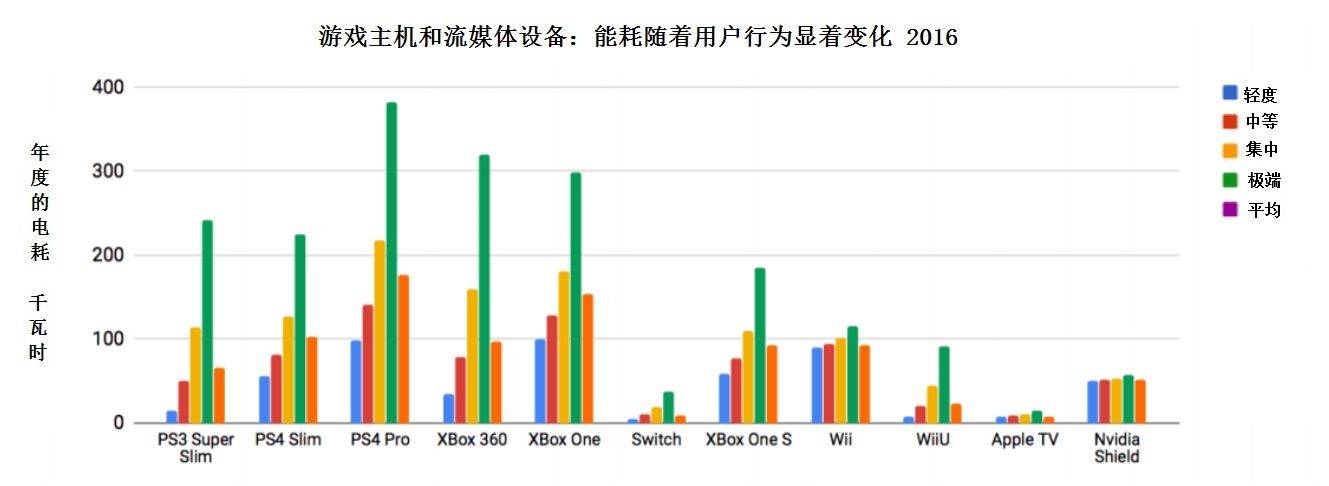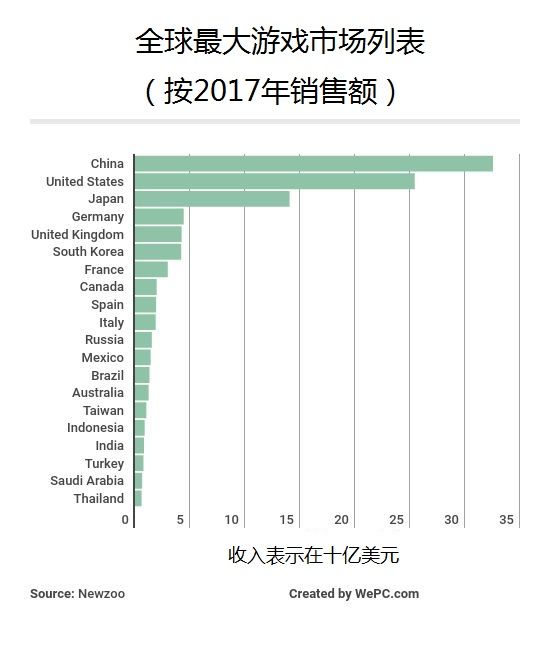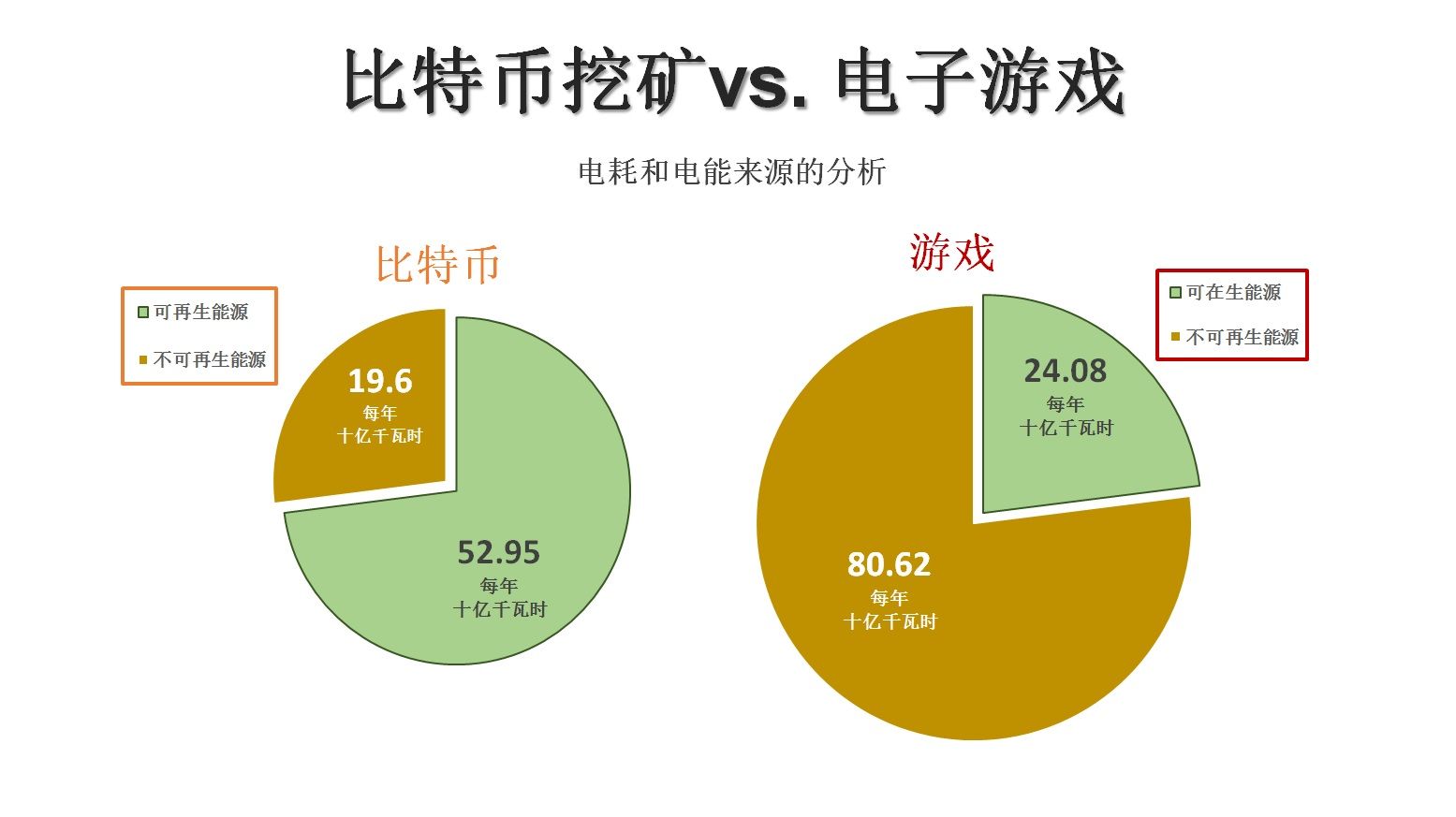Research | Bitcoin mining and video games: Who consumes more power?
The power consumption of Bitcoin mining is a hot topic in recent years. In fact, the negative impact of Bitcoin on the environment has also become one of the many popular comment points for many bitcoin experts on digital currencies.
However, data without context is quite misleading, and it is often the case when journalists write news about bitcoin mining. The (estimated) total power consumption is indeed high, and the power consumption increases rapidly as the network's hash rate increases. However, the impact of mining on the world is often distorted and misunderstood.
Here, we will compare the power consumption of global bitcoin mining and the power consumption of gaming machines and computers in video games around the world. We will also discuss the differences in their respective sources of electrical energy and their impact on the environment.
Let's start with the most common comparisons. Let's take a look at the latest data on bitcoin power consumption versus national power consumption.
- Observation | China blockchain builds a peak in global public opinion
- Views | Next vent: More DAO than Token
- Encrypted wallet MoA v1.0 officially released, three features make digital asset adoption easier
Bitcoin’s power consumption can be compared to electricity consumption in some countries.
Research popularization around 2017 compares the total power consumption of Bitcoin with the electricity consumption of the entire country. Therefore, the University of Cambridge invented a convenient tool called the Cambridge Bitcoin Energy Consumption Index (CBECI ), a tool that tracks the annual electricity consumption of bitcoin mining and makes interesting comparisons. The tool gets some information.
As of November 2019, the estimated energy consumption of Bitcoin is in the same range as the energy consumption levels of Colombia, Venezuela and Chile.

However, it should be pointed out that compared with the world's largest electricity-consuming countries (China's annual energy consumption is 556.4 billion kWh, the United States consumes 390.2 billion kWh per year), and bitcoin's energy consumption is only a small amount.
The next comparison is what we really want to know.
Bitcoin vs. Video Games – Who is more power-hungry?
First, it is important to emphasize that the following calculation results may have a higher error range.
The energy consumption of Bitcoin mining depends on the hash rate of the entire network and the efficiency of each mining machine. For example, using the latest and most efficient ASIC miners to produce 100 Eh/s of computing power is much less than using the 2017 or earlier version of the ASIC miner to produce 100 Eh/s of computing power.
Having said that, CBECI uses a robust method of calculating power consumption, so we feel that using their data of 71.55 billion kWh per year by November 2019 is no problem.

Estimating the power consumption of video games worldwide is even more difficult. One of the reasons is the wide variety of devices used to play games. For example, a game console such as PlayStation 4 or Xbox One consumes less power than a high-end gaming computer such as Digital Storm – Velox, so it is not accurate to calculate the energy consumption of various game consoles equally. In addition, unlike bitcoin miners, video game consoles and computers do not run 24/7 like Bitcoin miners.
To accurately estimate the global energy consumption of video games, these factors and many other factors need to be considered. This is also beyond the scope of this short blog post. Fortunately, we can refer to the Lawrence Berkeley National Laboratory in 2018 to study the energy consumption of video games in California. They considered various factors, such as the popularity of various game systems, their respective efficiencies, typical user behavior, and so on.
You can get a better understanding of their approach from the chart below, which is based on typical user behavior to calculate the weighted consumption of various game systems.


In the end, after combining all of this data, the research team concluded that the annual video game power consumption in California in 2016 was approximately 4.1 billion kWh.

Now, the final step is to extrapolate the estimated power consumption of video games across the world based on California data (again, it needs to be reiterated that the estimates in this paper may have a high margin of error).
First, we use California data to estimate game consumption across the United States. California has a population of about 40 million people, and the entire United States has about 3.27 billion people. If we assume that video gamers in other parts of the US behave like California, we simply multiply California's annual consumption of 4.1 billion kWh by a ratio of 327/40, and we will get 33.5 billion kWh per year for video games in the United States. Electrical energy.
Below, we use the Video Game Industry Overview released on WePc in 2019 to further extrapolate the total energy consumption of global video games. In this case, using the data about the game company's revenue to make projections is more computationally intensive and more detailed than using data on the number of players around the world and their typical user behavior. (Note that according to NewZoo “revenue is based on consumer spending in each country, excluding hardware sales, taxes, business-to-business services, online gambling and gaming revenues”).

Considering that the United States contributes 32% to global video game revenue, we make a (still imperfect) assumption that the United States contributes 32% to global video game energy consumption. In this case, the world consumes a total of 104.7 billion kWh of electricity per year on video games .
What is the point?
Based on our rough estimate, as of November 2019, we found that the global electricity consumption in video games is 46% higher than that of Bitcoin mining . However, because such estimates are not perfect, the energy consumption of these two industries may actually be very close. This compares the energy consumption of direct bitcoin mining with the annual energy consumption of small countries, which provides a better contextual context for studying the true scale and impact of today's bitcoin mining.
More important is the source of electrical energy. In a June 2019 report, cryptocurrency investment and research firm CoinShares estimated that more than 74% of the electricity used for bitcoin mining comes from renewable sources . In fact, 50-60% of the total hash rate of the Bitcoin network comes from Sichuan Province, China. Because it is filled with cheap water and electricity during the rainy season, because of the difficulty in storing or transporting electricity, a lot of redundant power is used for bitcoin mining. When the rainy season is over, many miners transfer their mines to other places, using local cheap geothermal or wind energy mining.
In fact, miners must get cheap electricity in order to compete for a long time. Out of this economic incentive, they are constantly looking for the lowest cost electricity prices, and many miners have opened mines in rural areas where excess renewable energy is produced. This is also a simple supply-demand relationship: the supply in these areas is high and there is basically no demand, because excess electrical energy is difficult to store or transfer to urban areas with consumers.
On the other hand, as of 2015, the US Energy Information Administration estimates that only 23% of global electricity comes from renewable sources. Because most of the games playing video games are more likely to occur in urban areas, it is reasonable to assume that the proportion of renewable energy consumed in playing video games is the same 23%. In this case, we have the following analysis results:

Dan Held said in his article " Proof of Work is Efficient " that "bitcoin is a super commodity, the basic commodity of the universe that is extracted from energy. "Work proof" turns electricity into digital gold. ". In other words, Bitcoin is like a battery we don't currently have. It stores excess energy and keeps its value and time.
We will continue to update Blocking; if you have any questions or suggestions, please contact us!
Was this article helpful?
93 out of 132 found this helpful
Related articles
- Twitter Featured|Reddit Hot Post: 79% down for two years, do you still have faith?
- QKL123 market analysis | The market quickly fell, and then the boundary between the bull and the bear (1119)
- Prophecy Machine Governance Attack in Maker: How to make Maker's mechanism more perfect?
- The US SEC re-examined the Bitwise Bitcoin ETF proposal. When was the first encrypted ETF approved?
- Local government's "chain" marathon: Who is the "blockchain capital"?
- Visa develops a blockchain-based joint computing system for processing large-scale private data
- Web 3 Series | How to achieve leapfrogging from organizational form and technology evolution?






